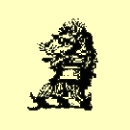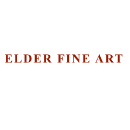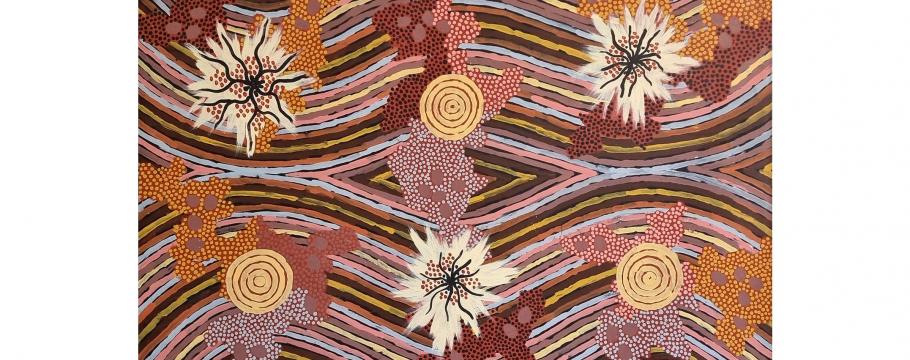
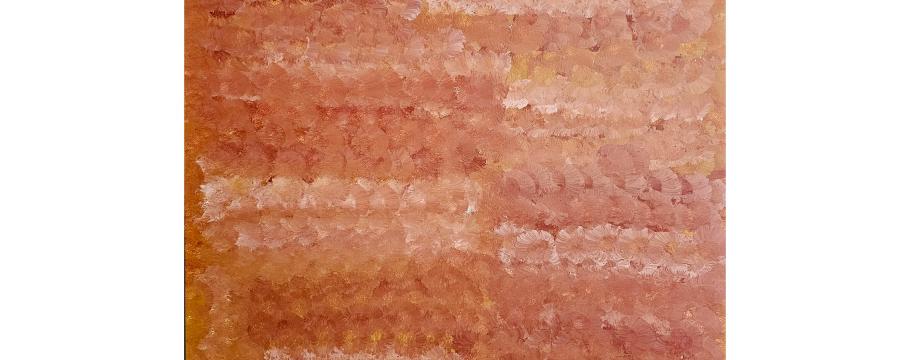
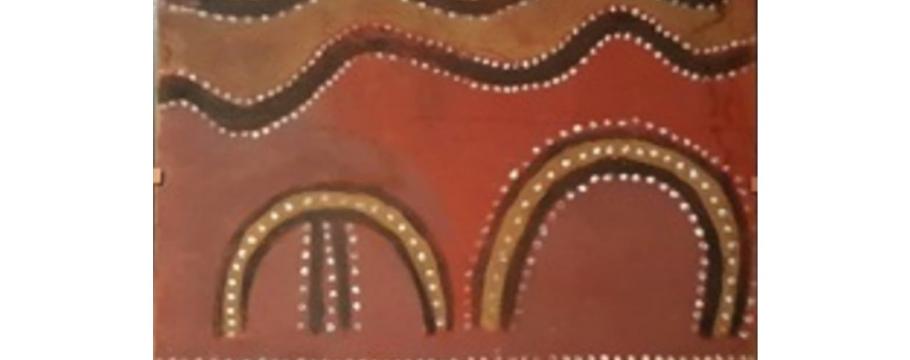
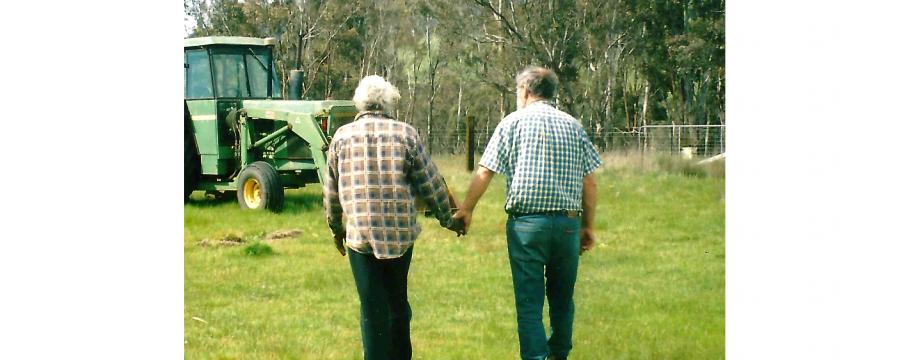
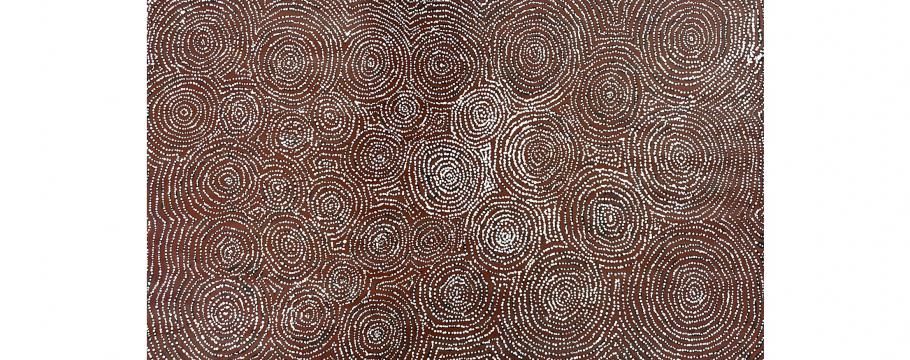
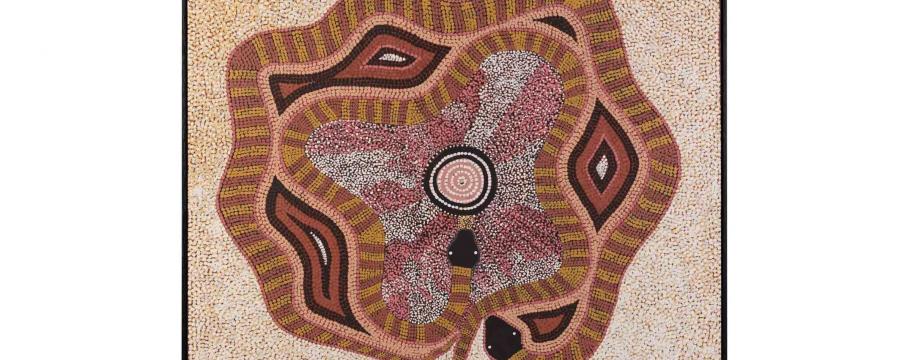
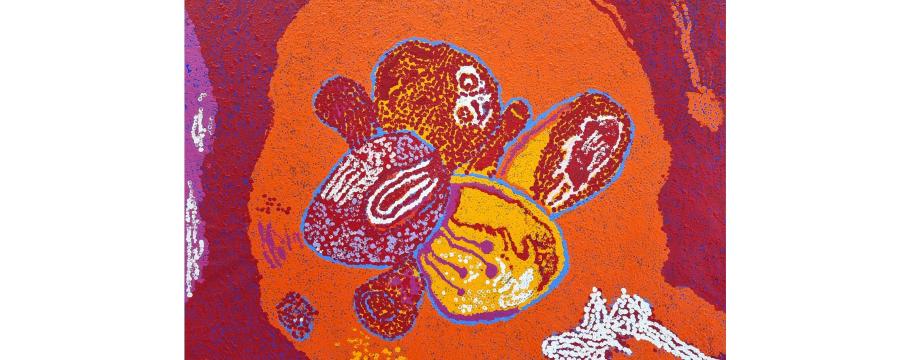
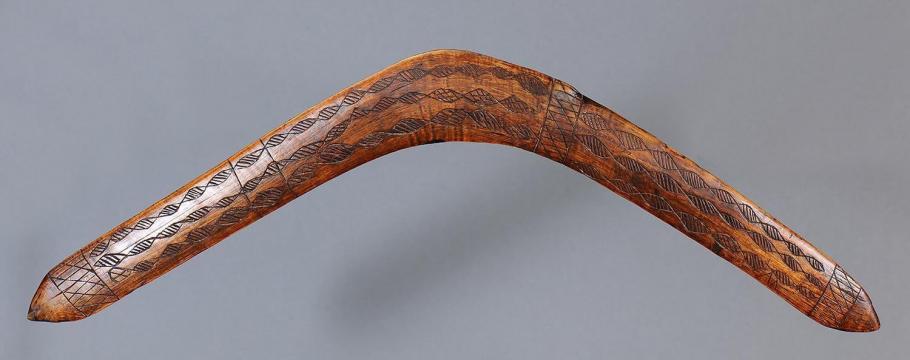
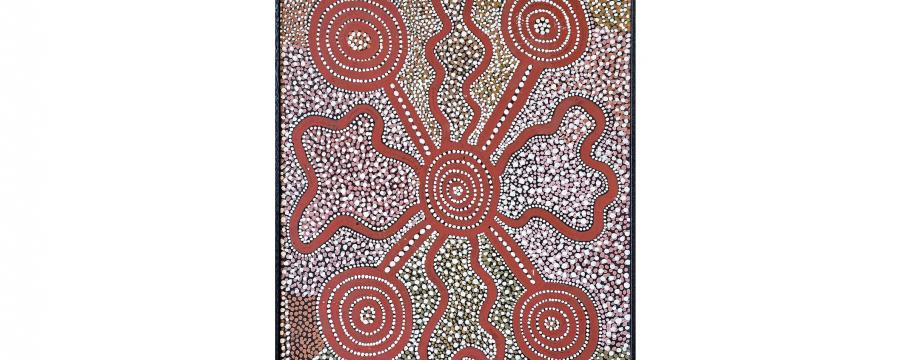
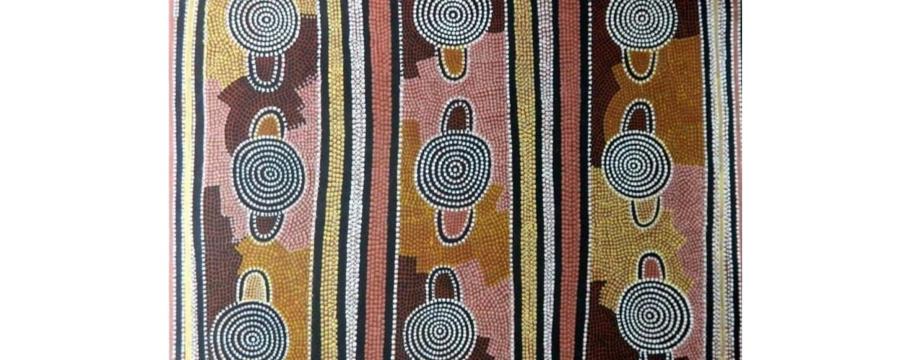
Indigenous art auction marks the passing of a likeable Australian larrikin
Author: Richard Brewster | Posted: 17th May, 2023
Surely it takes a strong and versatile larrikin streak to farm 40,000 emus, milk the venom of poisonous snakes to aid in the research of anti-venenes and manage the largest horse-riding school in the southern hemisphere – among many other unusual accomplishments – as well as become a close friend to Australia’s First Nations people.
This was the late Len Knight, a unique but humble character who died in February aged 86, and was so loved by many of the country’s most famous indigenous artists that he was given the Aboriginal name Tjakamarra (which means brother) by none other than the iconic Clifford Possum Tjapaltjarri long before they embarked on their artistic careers – let alone became household names.
A Victorian country boy who knew how to fend for himself, as a gifted horseman in his youth Len easily befriended Aboriginal stockmen and was always fascinated with their culture.
Throughout his life, he would spend hours combing garage sales and indigenous communities for artefacts and paintings – a love he passed on to his only child Adam.
So keen was the family to promote indigenous art, that in 1995 they established an Aboriginal art museum at Mangalore and built up a substantial collection of quality paintings and artefacts.
Adam, who with wife Amanda established an art gallery at Mitchelton, believes his father’s love of indigenous art began in the late 1950s when, during a visit to Alice Springs, he met famous Hermannsburg School water colourist Albert Namatjira at an exhibition.
“Dad said he could have purchased one of his paintings for five pounds but instead bought a young barefoot Aboriginal boy a pair of shoes,” he said.
Len counted among his friends such famous indigenous artists as Rover Thomas, Turkey Tolson, Shirley Purdie, Mick Namerari, Charlie Eagalie, Ningura Napaurrula, Ronnie Tjampitjinpa and George Ward Tjungurrayi.
He also was close to the Petyarre, Pitjara,Petrick, Pwerle and Possum families and, when Clifford – whom he had met many years earlier while riding together outside Alice Springs – died in 2002 aged 70, was asked to be a pall bearer at his funeral.
Following Len’s death, his wife Geraldine has decided to move from the family Tallarook home with some of the works to be sold by auctioneer Phil Caldwell online from 11am on Sunday June 4.
Paintings in the sale include Clifford Possum’s Larumba 1995 (lot 21), Emily Kame Kngwarreye’s Alhalker c1995 (lot 7) and Rover Thomas’s Meree, Texas Downs 1986 (lot 9).
Other works are George Ward Tjungarrayi’s Tingari Cycle, 2005 (lot 14), Turkey Tolson’s Snake Dreaming at Lampitjinya 1985 (lot 3) and Tommy Watson’s Katu Tjuta 2012 (lot 30).
A rare engraved return boomerang from western New South Wales is featured as lot 136, along with George Hairbrush Tjungarrayi’s painting Tingari (lot 2), Yala Yala Tjungarrayi’s Nyinga c1979 (lot 1) and Billy Stockman’s Man’s Story at Ilpitirri (Napperby Lakes) 1981 (lot 17).
Len was born June 20, 1936 in Kilmore, Victoria, one of five siblings and the eldest son of Percy and Sylvie Knight, leaving school at 13 to start work.
Despite his limited formal education, during his 20s Len worked in both Australia’s and New Zealand’s forestry industries.
At age 30, he declined the offer of Victoria’s top forestry job citing his lack of sufficient education, although an IQ test result of 141 – among the world’s top two per cent – seemed to indicate his more than adequate suitability for the position.
From early on, he had a natural talent with horses – a champion skilled at both trick riding and breaking them in – but he also had an almost Doctor Doolittle-like affinity with many other animals including donkeys, dingoes, tigers, chickens, geese and ducks.
Len’s ability to work with animals, birds and reptiles was legendary and such iconic fellow luminaries as Bob and Steve Irwin and Malcolm Douglas would often approach him for advice when faced with a thorny issue that needed resolving.
He also became advisor to Lord Alistair McAlpine-Baron McAlpine of West Green, Warren Anderson’s Tipperary Station rare animal park in the Kimberley region of Western Australia, and to many private and public zoos throughout Australia.
His love of horses led in the 1960s to the establishment of Knights Riding School at Broadford – the largest in the southern hemisphere with 200 animals in work on 80 hectares straddling the Hume Highway – where Len met Geraldine, whom he rescued from serious harm when her steed bolted during a cantering exercise.
Following a trip in the mid-1970s to South Australia to bring to Victoria wild ostriches left to roam when a major farm established in the 1920s to supply the fashion industry with feathers and leather had collapsed after the Great Depression, Len is credited with reigniting Australia’s ostrich industry.
Apparently, asking prices were anything from $200 to $250,000 for a pair of ostriches with Len often completing the deal with the flip of a coin – a toss he rarely lost.
At one stage, individual ostrich eggs were selling for $3000 – with Len making Adam run into the paddock and retrieve an egg once it had been laid before the lightning fast male parent could reach him.
In another incident, during a Channel 10 visit to film the birds, the cameraman asked if ostriches could be ridden. Len’s response was to throw Adam onto a bird’s back and let it go. Shortly after, his son was tossed off at high speed into nearby long grass.
Len also was instrumental in developing the country’s emu industry – selling a rare albino for what was believed to be a world record $25,000 – and became one of the first people to breed and promote Llamas and Alpacas, including importing fibres from Peru.
As such, he was a regular gratis supplier for many years to the Royal Melbourne Show animal nursery with more pens than any other breeders.
Catching and milking the venom of many of Australia’s most poisonous snakes for use by the Commonwealth Serum Laboratories in Melbourne was another of Len’s community accomplishments – for which he also refused to take payment.
In fact, despite his many successful business ventures, helping others rather than making money (he claimed it only burned a hole in his pocket) seemed to be Len’s overwhelming ambition in life.
One of the business highlights was working as a family in the 1990s selling emus on behalf of the Queensland’s Cherbourg community and developing the first line of cosmetic emu oil products now gracing the shelves of every chemist in Australia. Another was a sawmill at Lake Tyers.
Above all, Len Knight was a friend to all – never too busy to stop and talk to travellers, walkers, cyclists or people raising money for a good cause often inviting them home for a sandwich or drink.
Probably because he was such a unique character, Len was invited twice to visit the late Queen Elizabeth II at Buckingham Palace. Both times, out of complete humility, he turned the invitations down.


